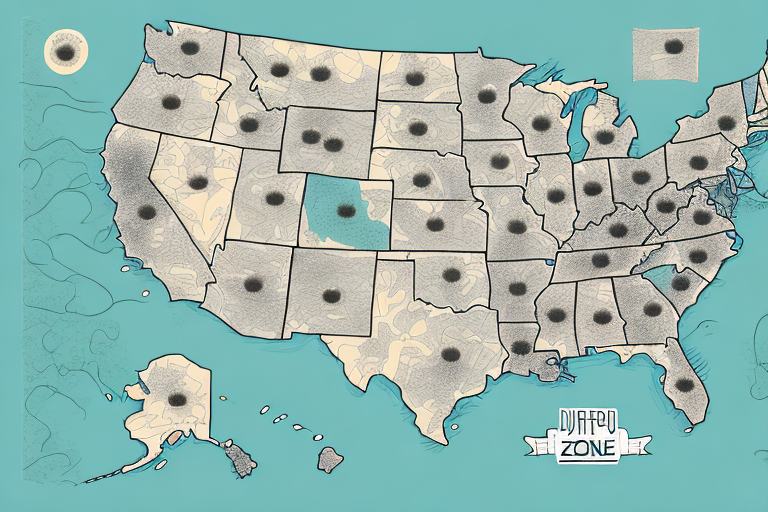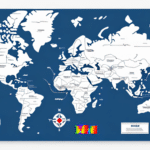Understanding the FedEx Zone Chart
The FedEx Zone Chart is an essential tool for calculating shipping rates based on the distance between the origin and destination of your package. By categorizing locations into different zones, FedEx provides a structured way to determine the cost of shipping, ensuring transparency and efficiency in shipping calculations.
What is the FedEx Zone Chart?
The FedEx Zone Chart is a visual representation that divides the United States into various shipping zones. These zones are determined by the distance between the package's origin and destination. Each zone is assigned a specific number and color, making it easier to identify the shipping rate associated with a particular route. The chart is regularly updated to reflect changes in shipping routes and distances, ensuring that users have access to the most accurate information.
How to Read the FedEx Zone Chart
Reading the FedEx Zone Chart involves locating the origin and destination ZIP codes on the chart's grid. The rows typically represent the origin zones, while the columns represent the destination zones. By finding the intersection of the origin and destination zones, you can identify the corresponding zone number and determine the shipping rate for your package. Here’s a step-by-step guide:
- Obtain the origin and destination ZIP codes of your package.
- Locate the origin ZIP code row on the zone chart.
- Find the destination ZIP code column.
- Identify the intersecting zone number and color.
- Refer to the FedEx Rate Tool to determine the shipping cost based on the identified zone.
Importance of the FedEx Zone Chart
The FedEx Zone Chart plays a critical role in shipping logistics by providing a standardized method for calculating shipping costs. Accurate knowledge of shipping zones helps businesses and individuals:
- Determine the most cost-effective shipping options.
- Plan shipping budgets based on anticipated rates.
- Avoid unexpected shipping costs by understanding zone-based pricing.
Factors Affecting Shipping Rates
Several elements influence the shipping rates determined by the FedEx Zone Chart:
Package Weight and Dimensions
The weight and size of the package are primary factors in calculating shipping costs. Heavier and larger packages typically incur higher shipping fees.
Shipping Method and Delivery Speed
FedEx offers various shipping methods, such as Ground, Express, and Overnight services. The chosen method and desired delivery speed significantly impact the overall shipping rate.
Destination Zone
The distance between the origin and destination, as represented by the shipping zone, directly affects the cost. Greater distances usually result in higher shipping fees.
How to Use the FedEx Zone Chart for Calculations
To effectively use the FedEx Zone Chart for shipping calculations, follow these steps:
- Gather the origin and destination ZIP codes.
- Access the latest FedEx Zone Chart from the FedEx Rate Tools.
- Locate the origin and destination zones on the chart.
- Identify the zone number and corresponding shipping rate.
- Select the appropriate shipping method and delivery speed based on your needs and budget.
Additionally, consider using the FedEx Rate Tool for more detailed shipping calculations and to explore various shipping options.
Common Mistakes to Avoid
When utilizing the FedEx Zone Chart, it’s important to avoid common pitfalls that can lead to inaccurate shipping costs:
- Incorrect ZIP Codes: Ensure that both origin and destination ZIP codes are accurate to prevent miscalculations.
- Ignoring Package Dimensions: Don’t overlook the size of your package, as it affects the shipping rate.
- Overlooking Additional Fees: Be aware of extra charges such as fuel surcharges, residential delivery fees, and handling fees for special packages.
- Relying Solely on the Zone Chart: Compare rates with other carriers to ensure you’re getting the best deal.
Benefits of Using the FedEx Zone Chart for Your Business
Implementing the FedEx Zone Chart in your shipping strategy offers numerous advantages:
Cost Savings
By understanding zone-based pricing, businesses can select the most economical shipping options, reducing overall shipping expenses.
Improved Budgeting
Accurate shipping cost estimates allow for better financial planning and budget management.
Enhanced Shipping Efficiency
Quickly determining shipping rates streamlines the shipping process, saving time and resources.
Tips for Accurate Interpretation
To ensure precise use of the FedEx Zone Chart:
- Double-check ZIP codes for accuracy.
- Stay updated with the latest zone chart updates from FedEx.
- Familiarize yourself with the chart’s color-coding system for quicker reference.
- Consider all package-related factors, including weight, dimensions, and shipping method.
The Role of Technology in Applying the FedEx Zone Chart
Advancements in technology have streamlined the application of the FedEx Zone Chart:
Shipping Software Integration
Many shipping platforms integrate with FedEx systems, allowing for automatic zone determination and rate calculation based on entered ZIP codes.
Online Rate Calculators
FedEx’s online rate calculators provide real-time shipping cost estimates, enhancing accuracy and convenience.
Automation Tools
Businesses can utilize automation tools to manage shipping logistics, reducing manual errors and improving efficiency.
Comparison of Different Shipping Zones and Costs
Analyzing the FedEx Zone Chart allows businesses to compare shipping costs across different zones:
- Local Zones: Typically lower shipping costs due to shorter distances.
- Regional Zones: Moderate costs as the distance increases.
- National Zones: Higher costs associated with long-distance shipping.
Understanding these differences helps in strategizing shipping methods to optimize costs effectively.
Real-World Applications of the FedEx Zone Chart
The FedEx Zone Chart is utilized across various industries and applications:
E-commerce Businesses
Online retailers use the zone chart to calculate shipping rates for orders, ensuring accurate pricing and timely delivery to customers.
Logistics and Distribution
Distribution centers leverage the zone chart to optimize shipping routes and manage logistics efficiently.
International Shipping
While the primary focus is on domestic zones, businesses shipping internationally also benefit by understanding domestic cost structures before expanding globally.
Conclusion
The FedEx Zone Chart is a vital tool for anyone involved in shipping, offering a clear and efficient method for calculating shipping rates based on distance and other factors. By understanding how to effectively use and interpret the chart, businesses can achieve significant cost savings, improve their shipping accuracy, and enhance overall operational efficiency. Staying informed about updates to the zone chart and utilizing technological tools can further optimize your shipping strategy, ensuring competitiveness in the dynamic shipping landscape.






















